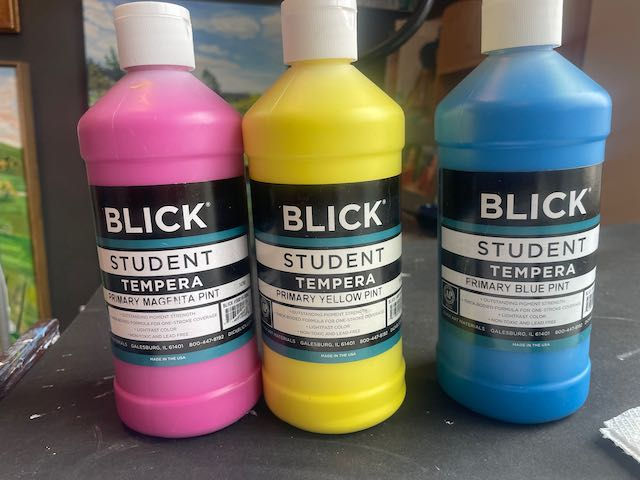What I Learned Moving from High School Art to Elementary, and Beyond
- ArtfulMommy

- Jun 2
- 4 min read
Updated: Jun 29

This post is going to be different from my usual art project posts. I want to shed light on something I’ve seen far too often: elementary art teachers are simply not valued the way high school art teachers are.
After teaching at the high school level for over 14 years, I took a job as the art teacher at my children’s elementary school four years ago. Since then, I’ve immersed myself in the world of elementary art. I’ve read countless blogs, connected with other art educators across the country, and reflected deeply on my own experiences. One thing has become overwhelmingly clear: elementary art teachers are seriously undervalued.
They were so undervalued in my own district that I decided to run for school board. I am now a Trustee for the Encinitas Union School District, where I am actively encouraging our district to treat all teachers with the same level of respect.
In Encinitas, the most glaring and frustrating issue was the pay discrepancy. While classroom teachers received union representation and a competitive salary, Enrichment teachers (Art, PE, Music, and Science) were making approximately one-third of that salary. It was not just unfair, it was demoralizing. And while my district’s failure was financial, other districts across the country are failing in even more fundamental ways.
Over the past four years, I’ve researched the state of elementary art education extensively. What I’ve found only reinforces what so many elementary art teachers have been saying for years: they are not given the time, resources, or professional regard they need or deserve.

Art is a core subject in California k-12 public schools. The California Arts Standards were adopted in 2019 making the arts an important part of a well-rounded education. At the high school level, art is part of the A-G requirements, meaning all high school students are required to take a year of visual or performing arts.
Now let’s compare elementary art to the high school art world I came from.
High school art teachers are paid the same as their colleagues in math, science, and English. We’re invited to IEP meetings and treated as integral members of the educational team. When students struggled, I was often asked for input because they might have been thriving in art, even if they were failing other subjects. We were seen. We were heard. We were respected as teachers, not "extras.". Now look at what elementary art teachers face.
Many elementary teachers teach over 25 back-to-back classes each week across seven different grade levels, sometimes serving more than 1,000 students, often across multiple campuses. Meanwhile, high school art teachers typically teach five classes, have only one or two course preps, and work with a maximum of about 180 students. The elementary workload is exhausting and unsustainable. It's no wonder it has become a revolving door in many districts.
What makes a great teacher? The ability to connect with students. But how do you connect meaningfully when you see 500 to 1,000+ students each week for only 30 minutes? You can’t. Not in a deep or lasting way.
To make matters worse, elementary art teachers often work in spaces not designed for art, no ventilation, no supply room, and maybe one sink (if they’re lucky). Many haul their materials between schools on carts, with minimal storage for student work or supplies.

Here you have a position where a teacher sees the same children for seven years, there is an incredible opportunity to build relationships over time. For many children, this is their favorite class of the week. Yet, many elementary art teachers don’t stick around. The main reason they don’t stay? Burnout.
Burnout caused by massive student loads, inadequate facilities, limited prep time, and a lack of professional respect. A 2022 survey by The Art of Education University found that more than half of art teachers experience burnout at least once a week, a sharp increase from just 29% the year before. That statistic reflects what I’ve seen firsthand and heard from countless other elementary art teachers: the workload and lack of support are simply unsustainable.
How can these teachers build meaningful relationships, differentiate instruction, or feel like professionals when their most basic needs aren’t being met?
The truth is: we would never expect this of our high school teachers. School districts must stop treating elementary art teachers like entertainers and start treating them like the skilled educators they are.
Elementary art teachers are the first to spark creativity in our children. They lay the groundwork for critical thinking, emotional expression, spatial reasoning, and confidence. Their classrooms are where children first learn that mistakes are part of the process, that different is beautiful, and that ideas can come to life with their own hands.
They are often the first teachers to show children that there are many ways to be "smart", not just with numbers and words, but with colors, shapes, and ideas.
If we say we value the arts, we have to show it. That means:
Fair pay, equal to classroom teachers and union representation
Reasonable student loads
Dedicated prep time
Appropriate classroom spaces
A seat at the table, just like every other educator
As a school board member, I’m committed to making this change, not just in Encinitas, but as part of a broader movement to truly value elementary art teachers.
I don’t share this to discourage new art teachers from entering the profession. Teaching elementary art is like becoming a new parent, no amount of preparation can fully capture what the experience will be like. It’s challenging, yes, but also incredibly meaningful. Teaching art at my children’s school was one of the most rewarding chapters of my life. Stepping away from that role to serve on the school board was a personal loss, for both me and my kids. But now, I hope to be a voice for the art teachers who are too often unheard and undervalued.
Because when we support our art teachers, we’re not just doing right by them, we’re investing in the creative potential of every child in our schools.
That is a future worth fighting for. Let’s do better, for our teachers, and for our kids.
Tell me about your school, what do they do to make you feel valued?






Comments